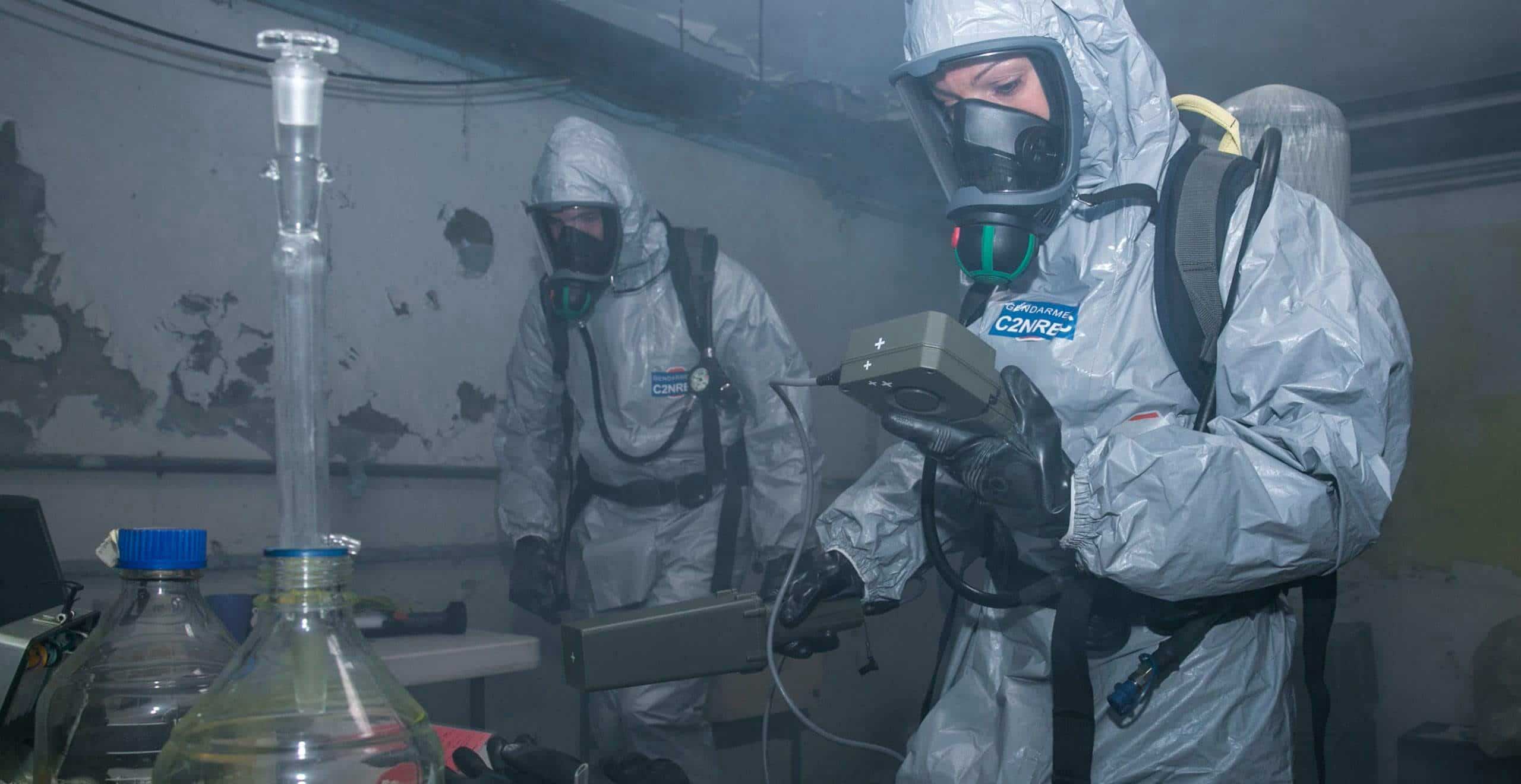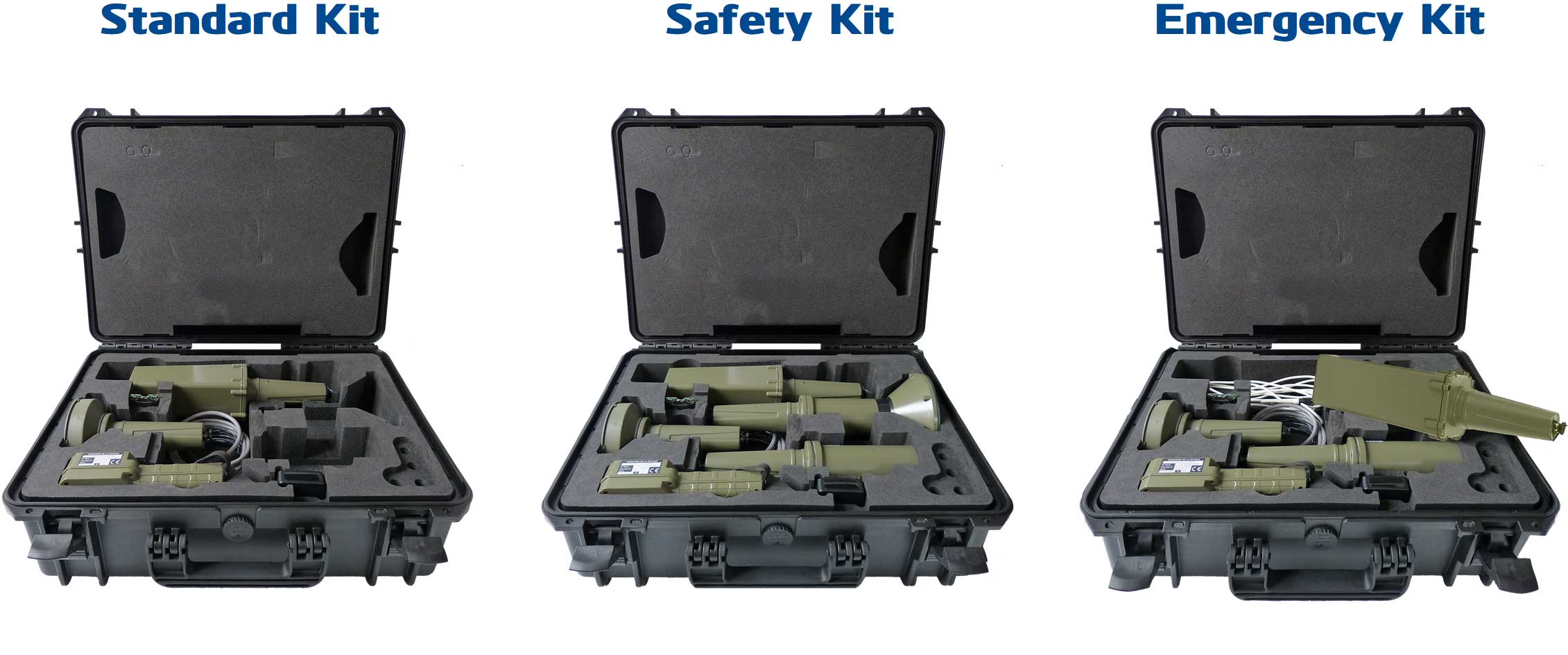Protect Both Public & First Response Personnel from Radiation Hazard
In an radiological emergency, the priority of quick response teams is protecting both the public and the personnel directly involved in the incident (either specialist and non-specialist in radiological risk) in order to minimize the health impact upon the exposure to and contamination from ionizing radiations.
Upon arrival at the incident location, and despite the suspected or confirmed presence of radioactive materials, they immediately make the initial evaluation of the radiological risk in order to mark the security perimeter necessary to evacuate the public and to close the affected area off. Depending of the event and its seriousness, the emergency services undertake both the research and the characterization of the radioactive sources to split the intervention zone into sectors:
- Zone of exclusion, which is the epicenter of the accident, where first responders and specialists hurry to rescue the populations, characterize the radiological source, and limit its effects on health (contamination, irradiation). On the border with the “zone of control”, the victims are gathered to be sorted out and taken care of, depending on the level of severity.
- Zone of control, which is used to control and regulate the flows of first responders coming in or leaving the exclusion zone thanks to a dedicated airlock. It helps to avoid the possible transfer of radiological contamination with decontamination chains. This phase of contamination control on victims and emergency response personnel is performed with alpha/beta probes.
- Zone of support, which is used as a rear base to coordinate all forces involved, through command posts separated into trades. It enables medical care after the in-depth decontamination of both victims and first responders.
Bertin Environics Solution
SaphyRAD MS, Handheld Multiprobe Radiation Survey Meter
At each of these stages, first responders have to carry out radioactive contamination control in order to reveal the presence of sources around and in the intervention zone. This is why they are equipped with handheld solutions for the detection and the measurement of radioactivity, such as the survey meter SaphyRAD MS developed and manufactured by Bertin Environics, part of the group Bertin Technologies. Used by emergency teams, this multiprobe survey meter allows to perform the initial evaluation of the affected area as well as the control of exposed and/or contaminated persons to limit the impact on health by prioritizing medical care.

SaphyRAD MS is a handheld multiprobe survey meter for radiation contamination detection and exposure monitoring.
Specially designed for field operations, the SaphyRAD MS is a multiprobe survey meter dedicated to the detection and the measurement of Alpha, Beta, Gamma and X radiations. Adapted to the operational constraints of civil and military users, this ready-to-use device features an ergonomic interface (large color screen, bulky buttons) which facilitates the rapid and optimal response of operators wearing CBRN clothing, while reducing errors of measurement and misinterpretations. This versatile, ultra-sensitive instrument has also one specific probe by type of radiation (Alpha, Beta, Gamma and wound), and can adapt to any range of emitting energies.
SaphyRAD MS Kits
Different Dedicated Probes for Enhanced Field Performance
Depending on the user’s needs, Bertin Environics offers three dedicated kits:
- Standard, containing SaphyRAD MS Detector, βγ Probe, High Sensitivity Gamma Probe, Simulation Kit.
- Safety, containing SaphyRAD Standard Kit, Alpha Probe, X-ray Probe.
- Nuclear safety, containing SaphyRAD Standard Kit, X-ray Probe, Wound Probe.

Since both personal and collective security of the exposed persons depend on the reliability and efficiency of the device, the SaphyRAD MS plays a crucial part in the initial intervention. Indeed, it provides specialists with valuable information on the characterization of the radiological risk faced by the public and the response teams, when the latter are not equipped with detection devices.
Conclusion
In case of established or suspected radiological incident, it is vital to quickly implement all the necessary actions to protect both the public and the response personnel, in order to limit health effects, either radiological or non-radiological (ex: psychological). To efficiently detect, measure and characterize radioactive contamination is thus key to operation management. Equipped with Alpha, Beta, Gamma, X and wound probes, the survey meter SaphyRAD MS delivers high performances for the detection and measurement of radioactivity, and provides first responders with the appropriate technology to confidently intervene, now having a comprehensive knowledge of the ongoing situation.

Very Exhaustive….covers all the issues
Thanks for your feeback Ravindra.